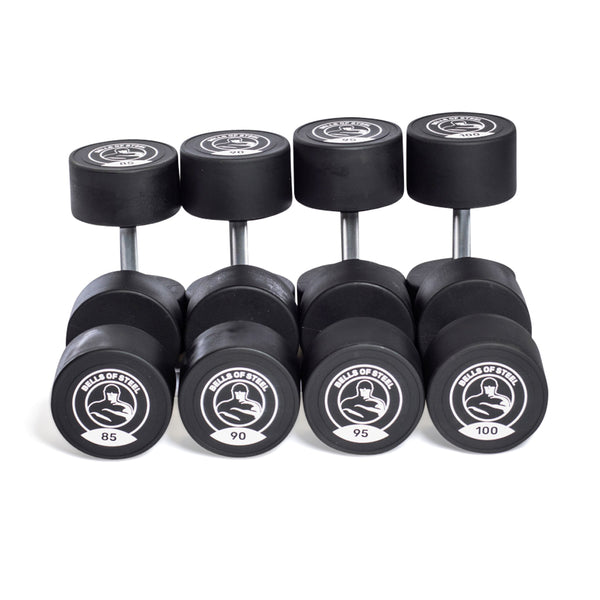Are you neglecting your delts? You know, those beautiful shoulder muscles that frame your chest like a boss. If you've got dumbbells and determination, it's time to get up close and personal with the deltoid raise. In this article, we'll dive into the nitty-gritty of the deltoid raise article, answering your burning questions, explaining the muscles it works, comparing front deltoid raises with lateral deltoid raises, and giving you a step-by-step guide.
Let's start with the basics. The deltoid raise is a shoulder exercise that targets your deltoid muscles. These muscles have three parts: the front, the side (lateral), and the rear. By performing deltoid raises, you can develop these muscles and sculpt your shoulders to perfection.
Before we jump into the how-tos, let's chat about the muscles that benefit from this exercise:
- Front Deltoids: This exercise primarily hammers your front deltoids. These are the muscles on the front of your shoulder that give you that superhero cape look.
- Lateral Deltoids: While the lateral deltoids also get some love during deltoid raises, they work harder when you do lateral raises.
Front Deltoid Raise
- Setup: Stand up straight, holding a dumbbell in each hand, palms facing your thighs.
- The Lift: Keeping your arms straight, raise the dumbbells in front of you until they reach shoulder level. Hold that flex for a moment, and then lower the weights back to your thighs.
- Reps and Sets: Aim for 3-4 sets of 10-12 reps.
Lateral Deltoid Raise
- Setup: Same as above, but this time, your palms face your body.
- The Lift: Raise the dumbbells out to the sides, keeping your arms straight until they reach shoulder level. Hold for a beat, then lower them back down.
- Reps and Sets: Again, 3-4 sets of 10-12 reps is the magic number.
The Deltoid Raise Guide
Here's a step-by-step guide on how to do the deltoid raise properly:- Choose Your Weights: Grab dumbbells of an appropriate weight. You want a challenge, but not a hernia.
- Stance: Stand up straight with your feet shoulder-width apart.
- Grip: Hold a dumbbell in each hand, either in front or to the sides, depending on whether you're doing the front or lateral raise.
- Execution: Raise the dumbbells to shoulder level, keeping your arms straight. Squeeze those deltoids, and then lower the weights back down. That's one rep!
- Breathe: Inhale as you lift, exhale as you lower. Don't forget to breathe; oxygen is your friend!
- Reps and Sets: Stick to 3-4 sets of 10-12 reps for each exercise.
- Dumbbells
- Some space (so you don't whack a wall or your cat)
Alternating Deltoid Raise
- Hold a dumbbell in each hand, palms facing your thighs.
- Raise one dumbbell in front of you, keeping your arm straight.
- Lower it while simultaneously raising the other one.
- Alternate like this for 10-12 reps.
Lateral and Front Alternating Deltoid Raise
- Combine the lateral and front raises in one workout.
- Raise a dumbbell in front of you, then the other one to the side.
- Alternate for 10-12 reps, keeping your shoulders guessing.
Free Weight Deltoid Raise Alternatives:
Arnold Press:
- Sit on a bench or stand with a dumbbell in each hand, palms facing you.
- As you lift the dumbbells, rotate your hands, so your palms face forward at the top of the movement.
Upright Row:
- Stand with a dumbbell in each hand, palms facing your body.
- Lift the weights close to your body, leading with your elbows.
Seated Shoulder Press:
- Sit on a bench or a chair with a dumbbell in each hand.
- Press the dumbbells overhead, focusing on the front deltoids.
- Keep your back straight and core engaged.
Cable Lateral Raise:
- Attach a D-handle to a low pulley on a cable machine.
- Stand with your side to the machine and grasp the handle with the hand farthest from the machine.
- Raise your arm to the side, targeting the lateral deltoid.
Face Pull:
- Set the cable machine to a high pulley.
- Attach a rope handle and stand facing the machine.
- Pull the rope towards your face, engaging the rear deltoids and upper traps.
Cable Front Raise:
- Attach a straight bar to a low pulley.
- Stand facing the machine and hold the bar with both hands.
- Lift the bar in front of you, targeting the front deltoids.
These exercises provide variety and can help you target different areas of your deltoid muscles. Remember to use proper form and choose weights or resistance levels that are appropriate for your fitness level and goals. Always warm up before your workout, and consider consulting a fitness professional if you're new to these exercises or have any concerns about your form or technique. Deltoid raises are a fantastic way to sculpt your shoulders, and they're a must for any home gym owner.
Whether you prefer the front or lateral variation or want to spice things up with alternating raises, your delts will thank you. And remember, it's not just about aesthetics – strong shoulders improve your overall upper body strength and posture. So, grab those dumbbells and start raising the roof – your shoulders will thank you!



